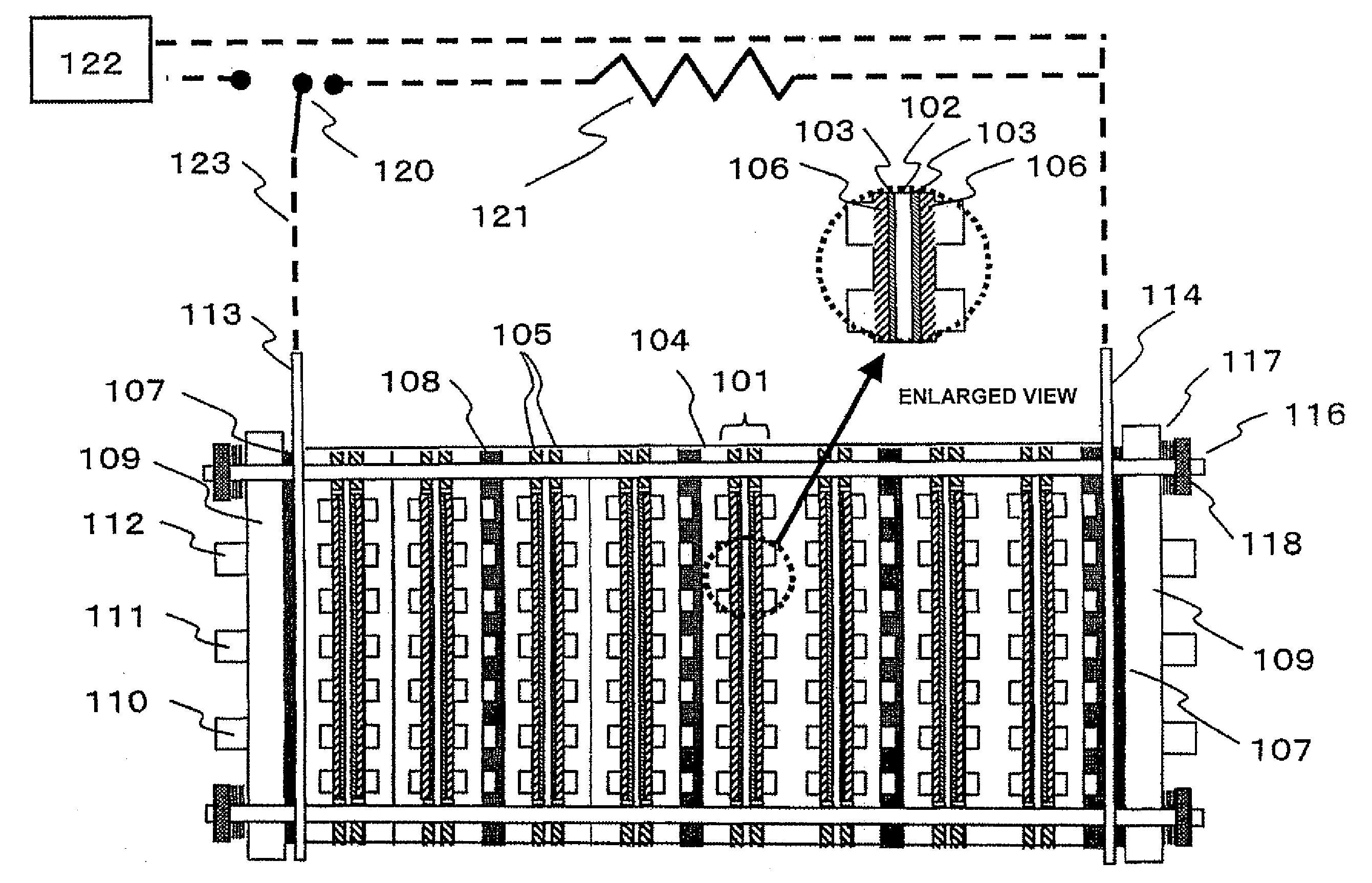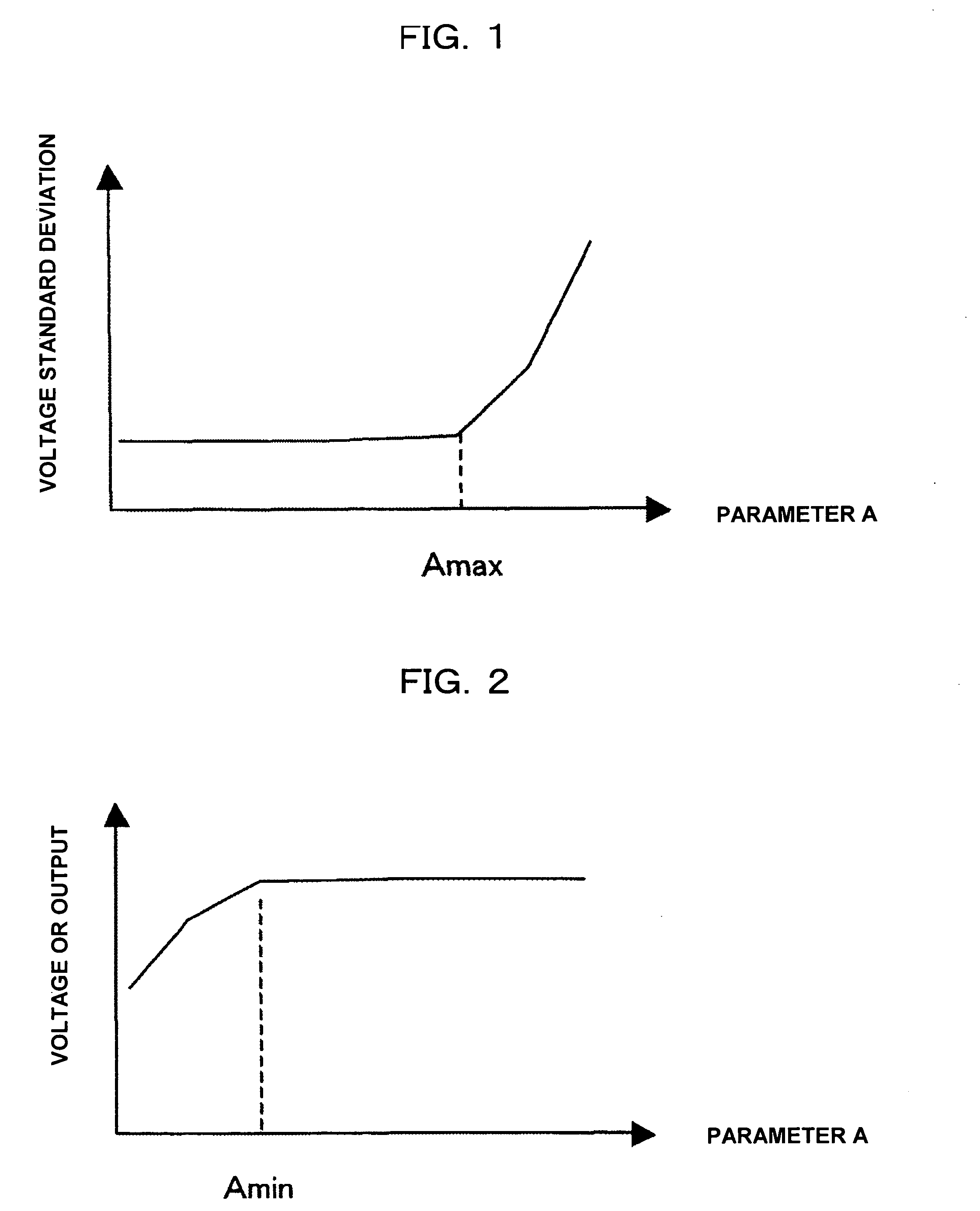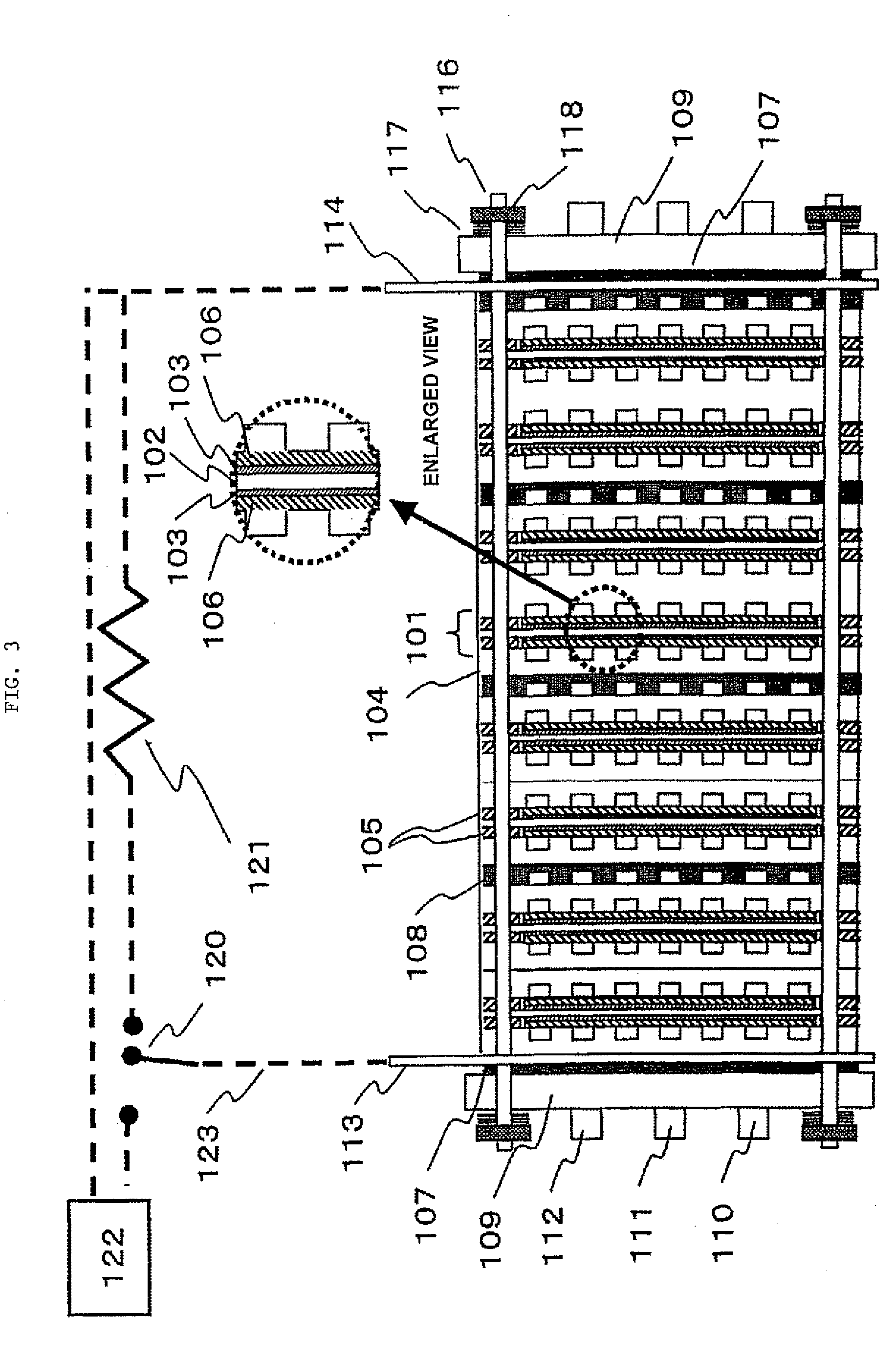Polymer electrolyte fuel cell
a fuel cell and electrolyte technology, applied in the field of polymer electrolyte fuel cells, can solve the problems of shortening the life of the cell, increasing the amount of gas consumption, and accumulating waterdrops
- Summary
- Abstract
- Description
- Claims
- Application Information
AI Technical Summary
Benefits of technology
Problems solved by technology
Method used
Image
Examples
first embodiment
[0040]The first embodiment is realized by an operation map stipulated by parameters described below.
[0041]The number of cells in a fuel cell is specific to cell specifications such as the cell output, current, and operating temperature. If the number of cells is determined, the number of separators is also determined and therefore, the volume of a gas passage of the separators and the surface area of the gas passage are determined by the cell specifications. Water accumulated inside the passage while electricity being generated depends on the surface area of the passage because it is attached to the surface of the passage. Water accumulated inside the passage while electricity being generated also depends on the shape of the passage because the ease with which the water is discharged is controlled by the linear velocity (defined as the flow rate / passage cross section) of a gas flowing through the passage. As a result, the probability of occurrence of a passage blockade is specific t...
second embodiment
[0060]The second embodiment is a fuel cell system, wherein if the temperature (Tmax) at which the standard deviation of the cell voltage begins to increase when the gas dew point is increased under conditions under which the cell temperature, gas entrance dew point, and current are specified and the temperature (Tmin) at which the average value of the cell voltage begins to drop when the gas dew point is decreased under conditions under which the cell temperature, gas entrance dew point, and current are specified are defined, the gas entrance dew point (water feeding speed to the cell) at startup satisfies: upper limit of the maximum amount of water retained in a cell≧(cell temperature−gas entrance dew point)×gas flow rate×startup time+water generation speed×startup time. This is an operation condition particularly focusing on voltage stabilization at startup when the gas entrance dew point is selected as the first voltage stabilization control parameter. In this case, the cell temp...
fifth embodiment
[0067]The fifth embodiment is a fuel cell system provided with a function for controlling an electricity generation control method by which Tmax is caused to change by making a coordinated operation to be performed between rate of revolutions (=gas flow rate) of a circulating pump and a gas feed pump and the fuel cell. If the rate of revolutions of the gas feed pump is increased, the gas linear velocity increases in a separator passage, making a passage blockade more unlikely. Thus, the gas dew point can be increased to a higher value, which is an effective means when a passage blockade is likely to occur at startup or when the load changes.
[0068]The sixth embodiment is a fuel cell system provided with a function for controlling an electricity generation control method by which Tmax is caused to change by making a coordinated operation to be performed between a secondary battery and the fuel cell. This is intended to relatively lower electric power of a polymer electrolyte fuel cell...
PUM
 Login to View More
Login to View More Abstract
Description
Claims
Application Information
 Login to View More
Login to View More - R&D
- Intellectual Property
- Life Sciences
- Materials
- Tech Scout
- Unparalleled Data Quality
- Higher Quality Content
- 60% Fewer Hallucinations
Browse by: Latest US Patents, China's latest patents, Technical Efficacy Thesaurus, Application Domain, Technology Topic, Popular Technical Reports.
© 2025 PatSnap. All rights reserved.Legal|Privacy policy|Modern Slavery Act Transparency Statement|Sitemap|About US| Contact US: help@patsnap.com



